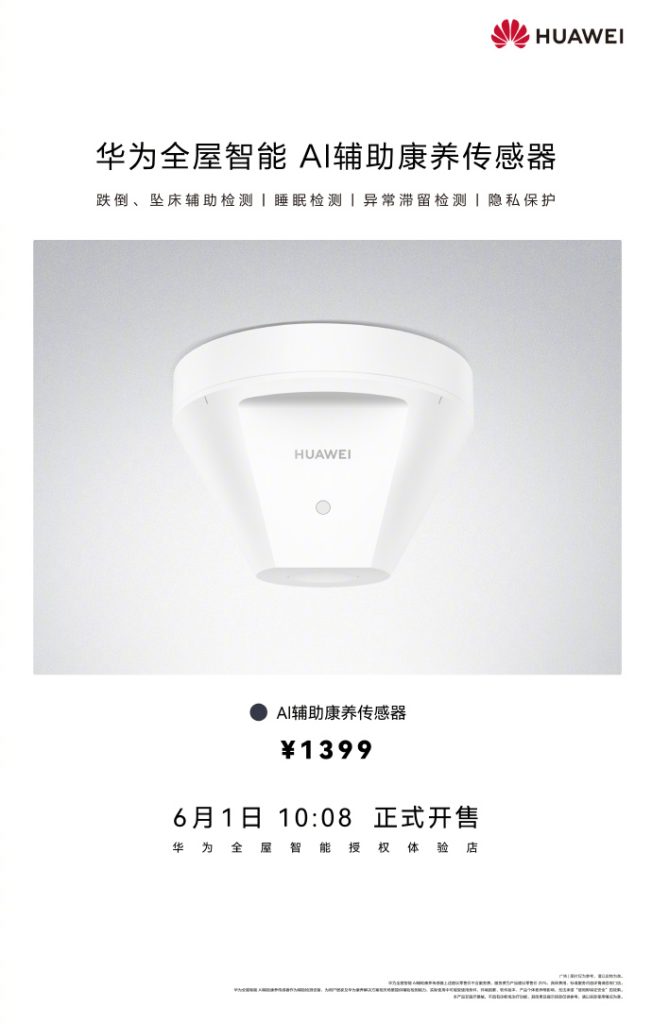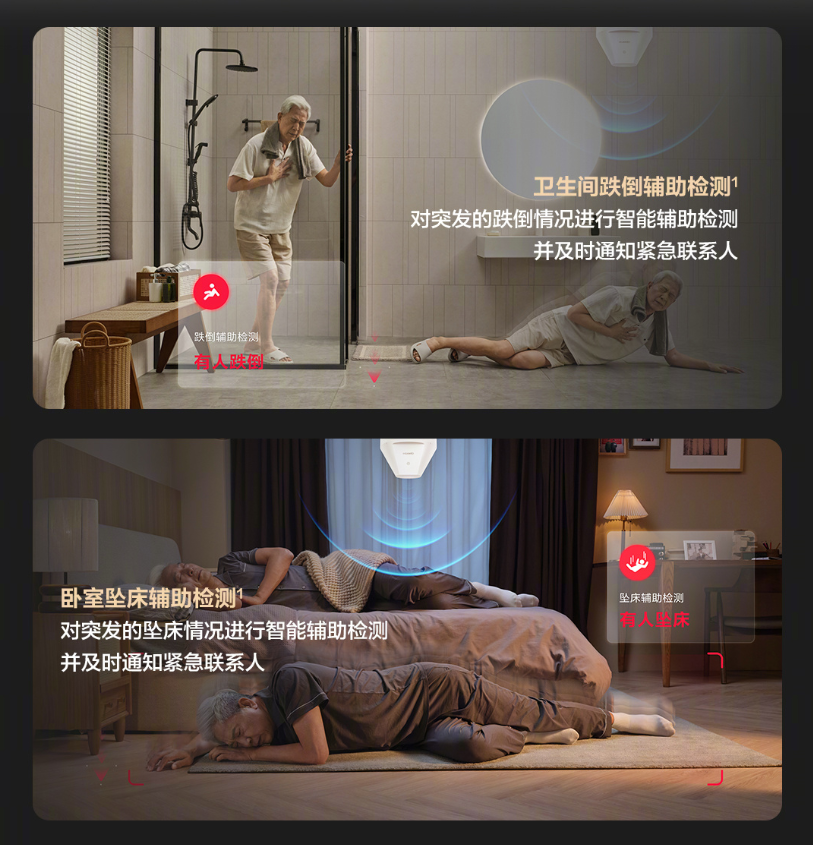Huawei has unveiled a new smart home gadget that uses millimeter-wave radar technology to monitor your health and well-being. The AI-assisted health sensor, priced at 1399 yuan (roughly $196), offers a range of features designed to keep you safe and comfortable in your own home.

Huawei Whole-house Smart AI-Assisted Health Sensor Specifications:
The sensor boasts three key detection areas: falls, bed falls, and sleep. It can comprehensively identify human posture, position, and respiratory rate, offering peace of mind for those concerned about elderly loved ones or wanting to improve their sleep habits.
One of the most valuable features is fall detection. The sensor can intelligently distinguish between falls in bathrooms and bedrooms, triggering alerts through multiple channels (phone calls, SMS, and push notifications) to designated contacts. This allows for prompt intervention in case of an emergency.
In addition to fall detection, the sensor can also monitor sleep patterns and detect prolonged absences from bed. This can be helpful in identifying potential health problems. Users can also set sleep plans and receive alerts if an elderly person sleeps for an unusually long time or wakes up at an odd hour.

The sensor integrates seamlessly with Huawei’s whole-house smart solutions. It offers micro-motion perception capabilities, allowing for precise detection of human presence even during subtle movements like breathing. This enables features like automatic light adjustments based on occupancy, creating a comfortable and energy-efficient environment.
The sensor intelligently filters out interference from objects like robotic vacuums, ensuring accurate detection and preventing false alarms. Huawei also prioritizes user privacy. The millimeter-wave radar technology ensures no images or sounds are collected, making it a safe solution for installation throughout the home.
It’s important to note, however, that the sensor is intended as an auxiliary detection device and cannot guarantee complete safety. Additionally, it’s not a medical device and cannot diagnose or treat medical conditions.
The sensor has a maximum coverage area of 25 square meters (269 square feet) and is currently limited to single-person detection. Huawei advises against using the sensor in homes with pets, as their movement might trigger false alarms.
RELATED:
- Apple Watch Ultra 2 is available at a jaw-dropping price
- Grab Apple iPad Air 6th Gen with M2 Chip at record-low prices
- 6 Amazing One UI 6.1 AI Features You Can’t Ignore
- Huawei launches 5000mAh Magnetic Power Bank with bi-directional wired charging, 30W wireless charging
- Huawei PSD-AL00 phone passes 3C certification, likely a Nova 13 series member







